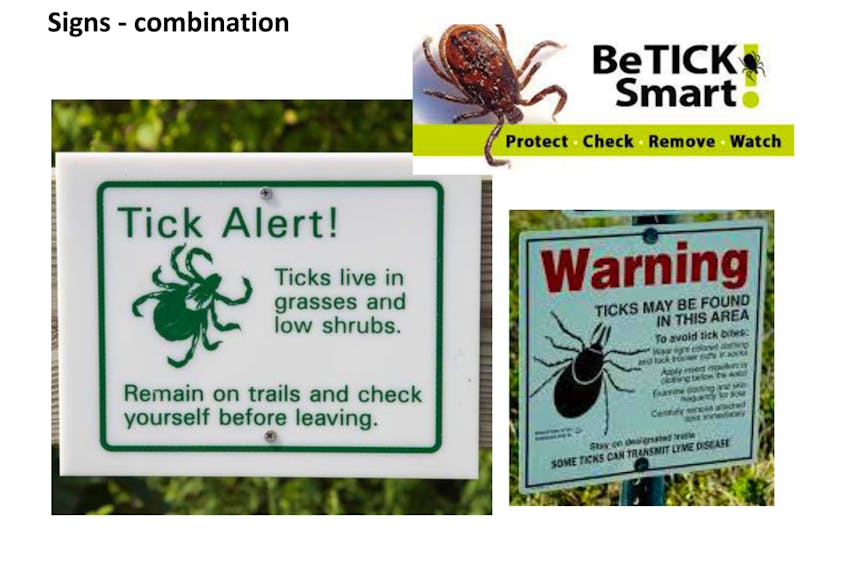SACKVILLE, N.B. – With the number of ticks on the rise in the region, a Mount Allison professor and researcher from Mount Allison University is urging the town of Sackville to put up signs in its parks and green spaces to advise residents and visitors of the presence of the black-legged creatures and the risks they pose.
“There are ticks here . . . so it’s probably not a bad idea to put signs up about them,” Lloyd told members of town council during a presentation last week, in which she provided an update on the state of ticks in Sackville and what to do about them.

Lloyd, a founding member of the university’s Lyme Research Network, said communication and education around ticks and the bacteria they can carry such as those that cause illnesses such as Lyme disease, is essential for public health.
Over the past few years, researchers in Lloyd’s lab have teamed up with veterinarians across the Maritimes to get a better idea of ticks and tick-borne illnesses including Lyme disease in this region. They have collected and tested hundreds of specimens and have even established a Maritime Tick Portal (http://www.maritimetickmaps.ca/) a mapping resource to help share the latest information on ticks and Lyme disease in the region.
In New Brunswick, their research has indicated ticks are established pretty well everywhere in the province - and Sackville is no exception. Lloyd said the most problematic areas seem to be the parks and the green spaces, particularly locations like Beech Hill Park, the Sackville Waterfowl Park and the rough areas of the town’s golf course.
“So people are finding ticks not only in their backyards but there are a lot in the parks,” she said.
She said the situation is only going to worsen since not only do the ticks seem to be getting heartier, and not dying off during harsh winters like they used to, but there are also many other species of ticks that are being carried in to North America on migratory birds.
“They really like it here unfortunately.”
Lloyd said the town should be proactive in putting up signs, to let people know “that you have ticks around.” She doesn’t think the signs would deter people from using the parks but it would provide them with the information they need to take the proper precautions.

“People are still going to go out and enjoy our wild areas, as they should,” she said. “But at the end of the day, if you check yourself for something with a whole bunch of legs that’s sucking your blood, that’s really useful. And you’re not necessarily going to think about doing that unless you’ve noticed somewhere in the back of your mind that there was this little sign saying ‘there are ticks here’ . . . and then you think about it.”
Lloyd said there’s no proven way to get rid of ticks or to spray for them so the best option at this point is to simply let people know of their presence and the risks associated with them.
She said the biggest problem with ticks is that they don’t just suck your blood like mosquitoes, but they can bury into your skin and then “squirt the diseases they carry in their gut into your bloodstream and then you get sick.” Lyme disease is the most common of those tick-borne diseases. Of the specimens she has been sent, from both humans and pets, Lloyd said about 18 to 20 per cent are infected with Lyme disease.
And while there are plenty of tips out there about how to protect yourself against Lyme disease, Lloyd said she understands it’s not always possible to go out in the summer fully clothed with long sleeves and pants and your socks tucked into your pants, unless you regularly work in the woods.
But when heading to an outdoor area for recreational use, Lloyd said people want to be more comfortable. So she advises everyone to perform a tick check when returning home, an important measure since a tick has to be attached to you for 24 hours to transmit Lyme disease.
“If you think to have a quick glance at your body when you have a shower and pull off a tick or notice anything crawling up your leg and remove it, that’s probably going to be more effective than telling everyone to dress in full clothes for a day in the park.”









